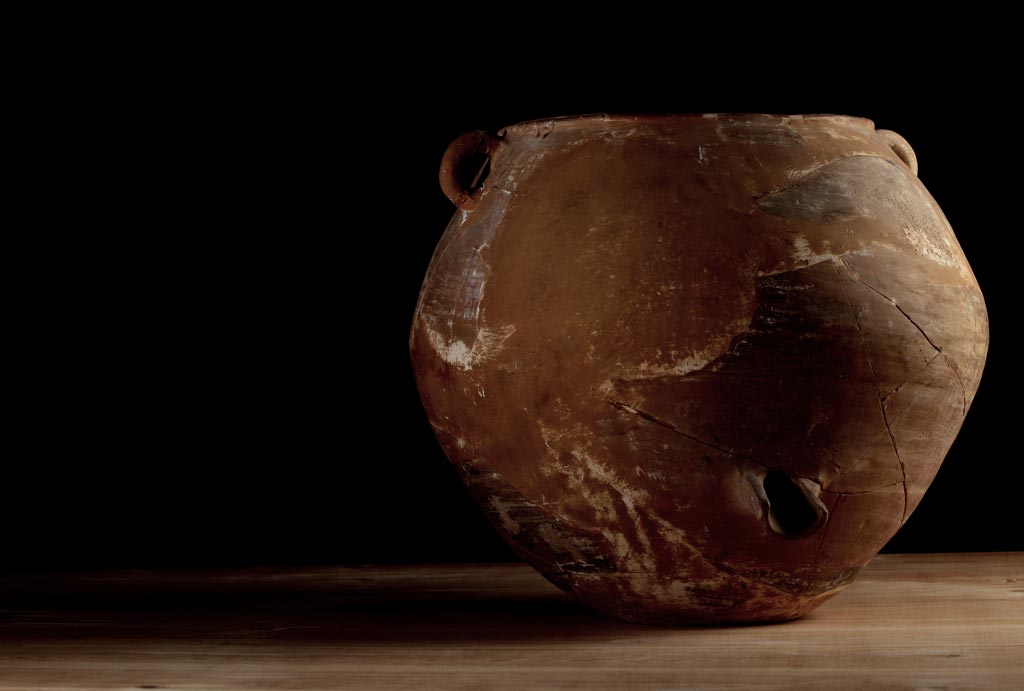100,000 – 50,000 BC
Paleolithic sites

Let’s visit El Mirador (meaning the Viewpoint), a vineyard perched on the low hill of Els Basets, today owned by Can Bas. Remains of flint and fragments of cut stone show that a small stone age community was working here between fifty and a hundred thousands years ago.
VII – II centuries BC
An Iberian settlement

Now let’s turn round, speed up the wheel of time and visit the wall enclosing the house at Can Bas. Here there is documentary evidence of silos for storing grain, amphoras of wine and olive oil, pottery produced on site and pots from the other end of the Mediterranean, the result of contacts between the native population and the Greeks. All the indications are that this was an Iberian settlement. The existence of a large earthen jar and turned cups in fine black clay indicate the importance of wine 2,500 years ago.
2nd century BC – 4th century AD
Under Roman influence

All at once we hear the sound of hammers and chisels on the dry hardness of limestone. Dusty-faced slaves – Iberian, perhaps – deftly lay cobbles and cut stones in place to build the future Via Augusta, to connect the provinces of Baetica, Cartaginensis and Tarraconesis to Rome. A section of this road crosses the Can Bas estate from north to south.
Very close by, an influential patrician from the Tarraco area built a villa here, which was at its peak in the 2nd century AD thanks to the vineyards and the wine trade. Inside this villa, gentlemen discuss business over a mensa, a marble table supported by three fearsome, skilfully carved lions. At Can Bas you can see a replica of one of these animals that served as a trapezophoron, supporting a table for a Roman noble.
But it’s getting dark.